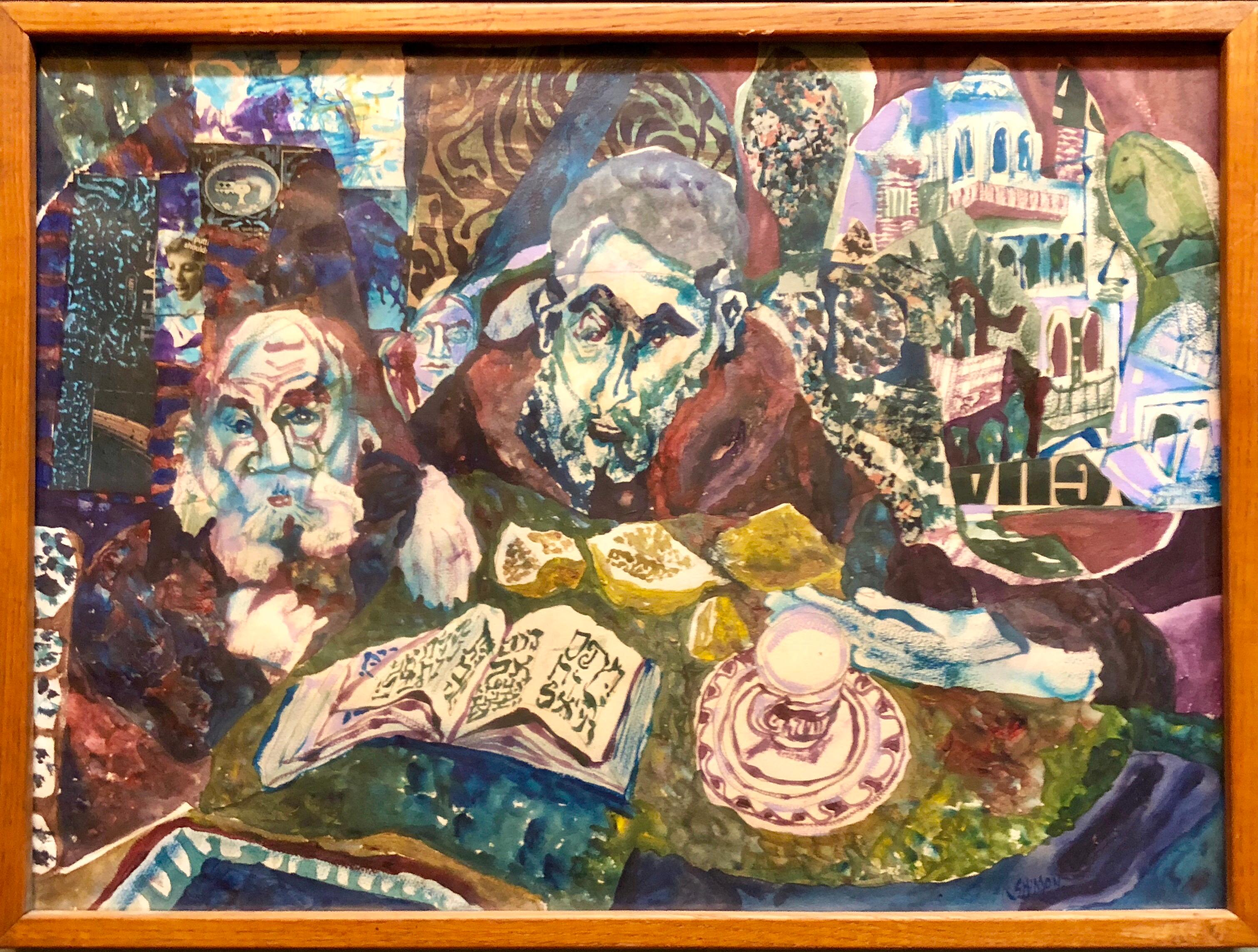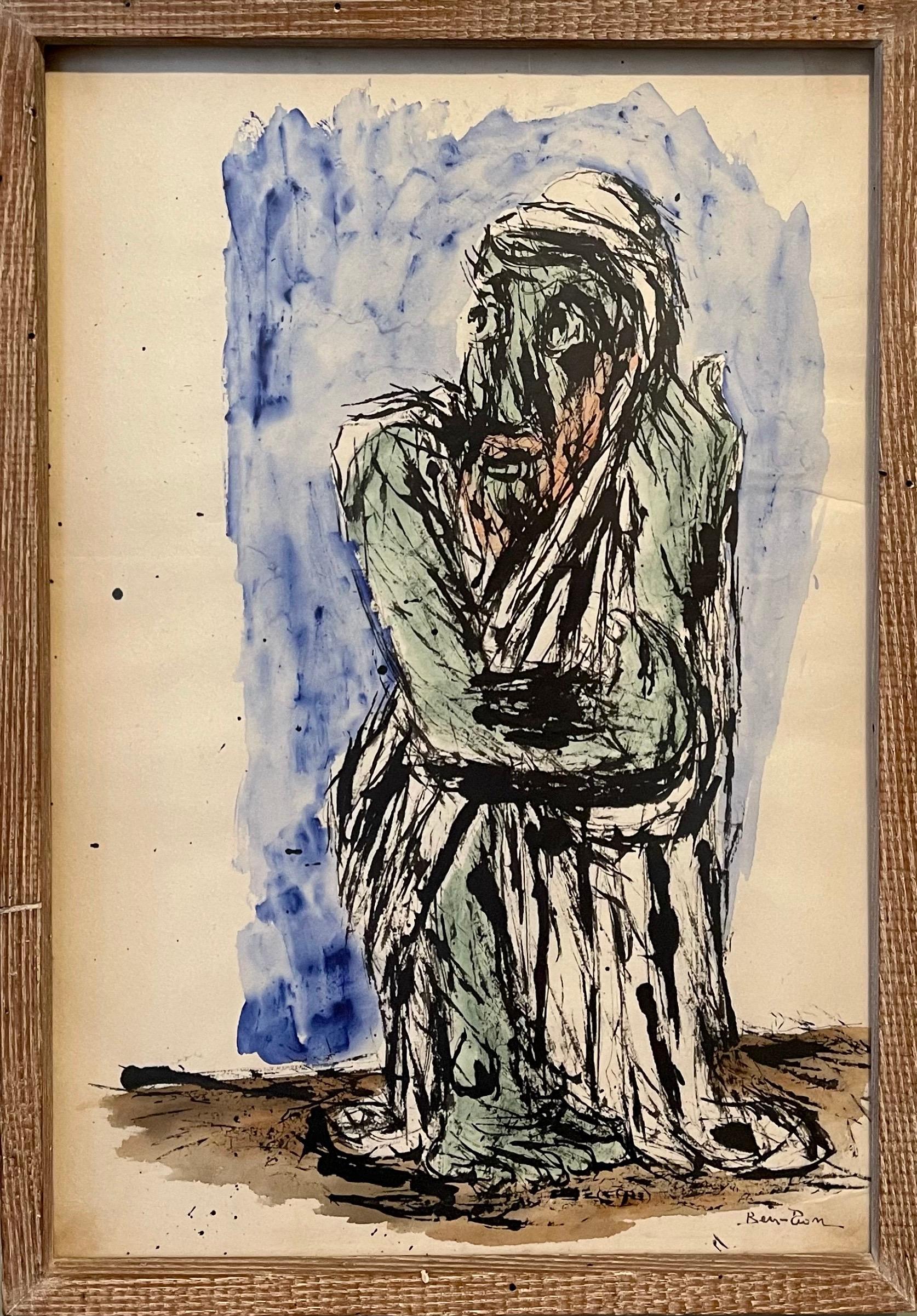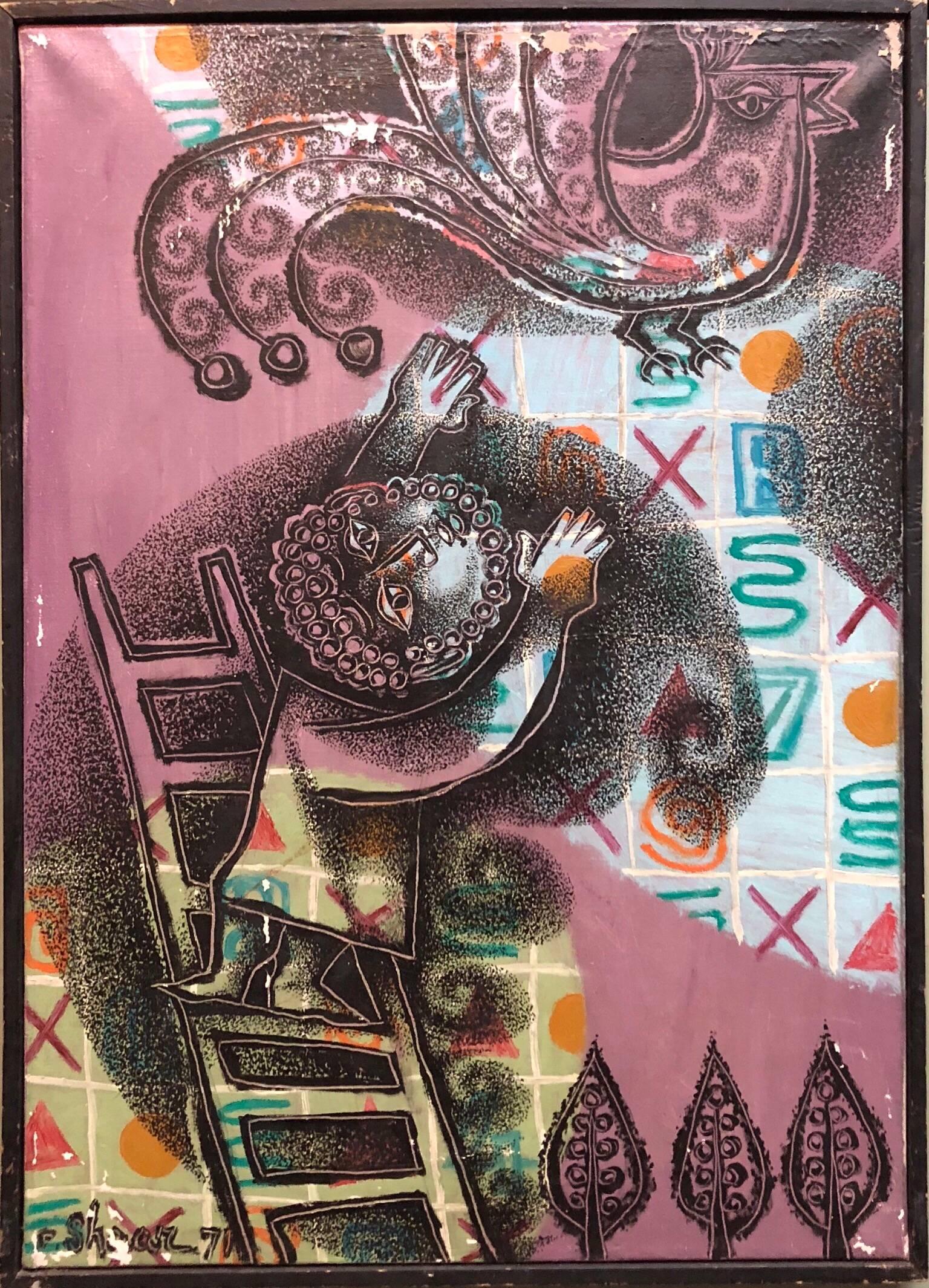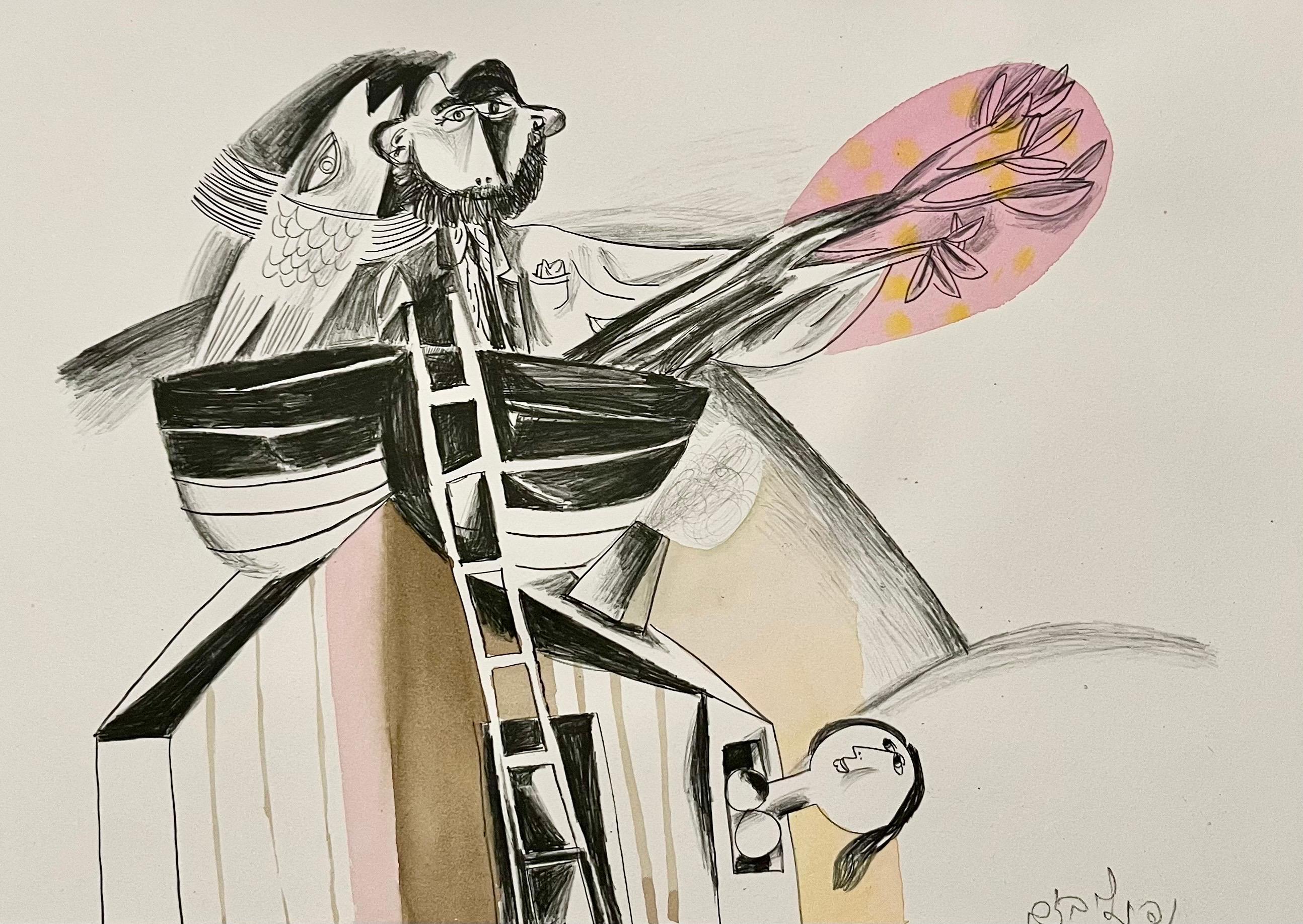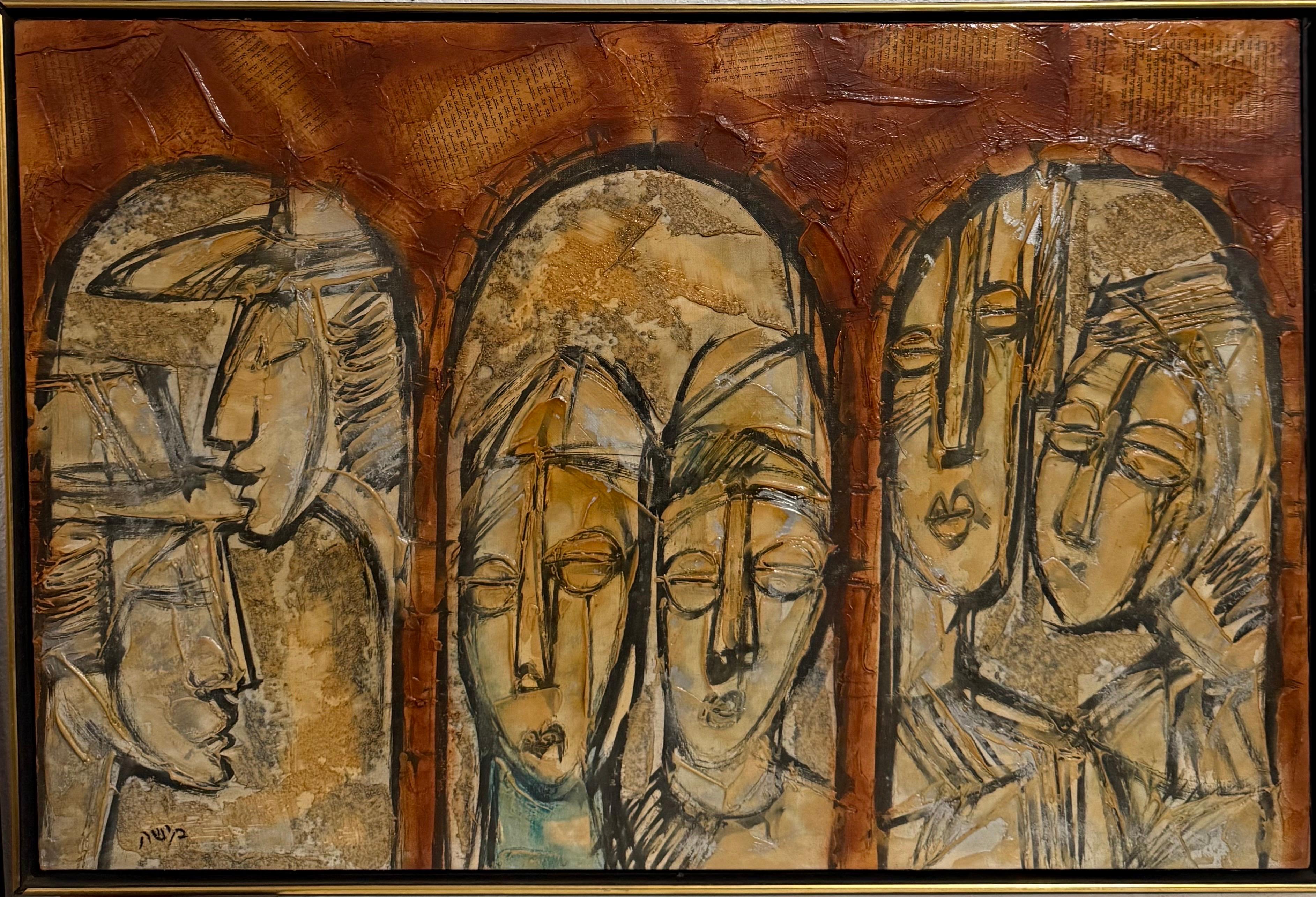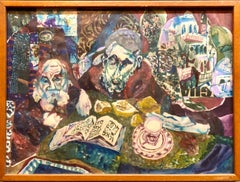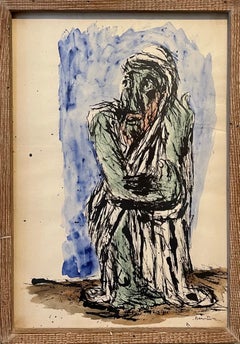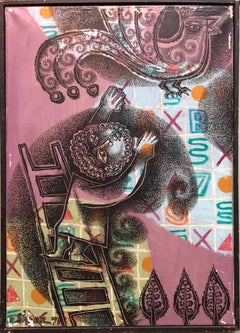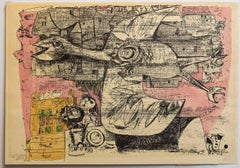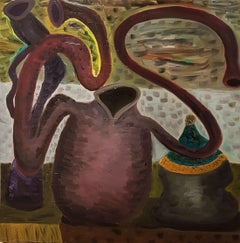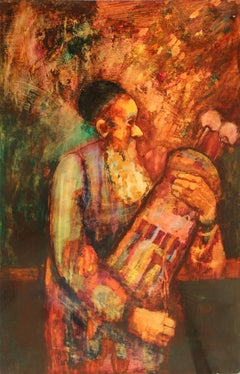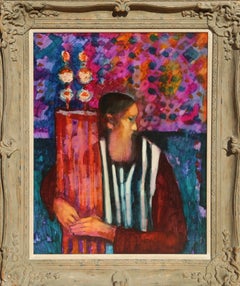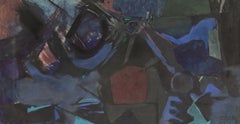Items Similar to Mid Century Modernist Judaica Rabbi Scribe Painting Outsider Art
Want more images or videos?
Request additional images or videos from the seller
1 of 6
Paul ShimonMid Century Modernist Judaica Rabbi Scribe Painting Outsider Art
$2,900
£2,185.78
€2,526.37
CA$4,097.68
A$4,478.92
CHF 2,358.94
MX$55,072.60
NOK 29,480.22
SEK 27,735.07
DKK 18,860.94
About the Item
This is a 2 sided painting with a torn paper collage on the second side.
Born in New York, Paul Shimon (1919 - 2011) was both an accomplished artist and composer.
Considered by some to be an Early Jewish Outsider artist, he was influenced by his Sephardic roots and leaves a great collection of work in private collections worldwide. Shimon studied at the Art Students League of New York and with W.A. Clark Prize recipient Jean Louis Liberte (1896 - 1965).
A pioneer of abstract Judaica, the influence of his studies with Jean Louis Liberte together with that of his sephardic heritage is often apparent in Shimon’s artwork. Shimon was listed amongst the Who Was Who in American Art, the reference book of cultural life in the United States.
His works are held at the Butler Institute of American Art in Youngstown, Ohio. He was also active as a painter on early plastic jewelry.
Exhibited:
Audubon Artists, 1954
Macdowell Alumni Show, 1971
Skylight Gallery, NYC, 1970s.
Awards:
Emily Lowe Watercolor Award, 1953
Macdowell Colony fellowship, 1960.
Collections:
Butler Institute of American Art in Youngstown, Ohio.
Private Collections
Paul Shimon was an early member of the non-profit New York Artists Equity Association, an organization dedicated to advancing legislation to protect the legal rights of visual artists.
Paul Shimon died at the age of 92.
- Creator:Paul Shimon (American)
- Dimensions:Height: 48 in (121.92 cm)Width: 24 in (60.96 cm)
- Medium:
- Movement & Style:
- Period:
- Condition:minor wear and dust to surface.
- Gallery Location:Surfside, FL
- Reference Number:1stDibs: LU38212394162
About the Seller
4.9
Platinum Seller
Premium sellers with a 4.7+ rating and 24-hour response times
Established in 1995
1stDibs seller since 2014
1,806 sales on 1stDibs
Typical response time: <1 hour
- ShippingRetrieving quote...Shipping from: Surfside, FL
- Return Policy
Authenticity Guarantee
In the unlikely event there’s an issue with an item’s authenticity, contact us within 1 year for a full refund. DetailsMoney-Back Guarantee
If your item is not as described, is damaged in transit, or does not arrive, contact us within 7 days for a full refund. Details24-Hour Cancellation
You have a 24-hour grace period in which to reconsider your purchase, with no questions asked.Vetted Professional Sellers
Our world-class sellers must adhere to strict standards for service and quality, maintaining the integrity of our listings.Price-Match Guarantee
If you find that a seller listed the same item for a lower price elsewhere, we’ll match it.Trusted Global Delivery
Our best-in-class carrier network provides specialized shipping options worldwide, including custom delivery.More From This Seller
View AllAssemblage Collage Painting Outsider Art Rabbis Studying, Jerusalem
By Paul Shimon
Located in Surfside, FL
Born in New York, Paul Shimon (1919 - 2011) was both an accomplished artist and composer.
Considered by some to be an Early Outsider artist, Shimon studied at the Art Students Leag...
Category
Late 20th Century Abstract Figurative Drawings and Watercolors
Materials
Mixed Media
Abstract Expressionist Rabbi Watercolor Painting Jewish American Modernist WPA
By Ben-Zion Weinman
Located in Surfside, FL
Watercolor painting of standing prophet or Rabbi, Judaica artwork
Born in 1897, Ben-Zion Weinman celebrated his European Jewish heritage in his visual works as a sculptor, painter, ...
Category
Mid-20th Century Expressionist Abstract Drawings and Watercolors
Materials
Paper, Watercolor
Judaica Polish Israeli Folk Art Biblical Modernist Oil Painting
By Pinchas Shaar
Located in Surfside, FL
This painting is iconic of Pichas Shaar's aesthetic, and stylistic influences. A ceramic mosaicist and sculptor as well as a painter, Shaars strong decorative sense was evident in his colorful canvas, with their frequent rectilinear geometry, depicting stylized figures, often mythological or biblical subjects.
Pinchas Shaar (born Szwarc, later Shaar) was born in Lodz, Poland in 1923. already at a young age he drew small graffiti and characters of fairy tales. at sixteeen he met the Polish painter Wladyslaw Strzeminski, a disciple of the Russian painter Kazimir Malevich, who encouraged Pinchas’ artistic education. Strzeminski encouraged Pinchas' artistic education and introduced him to the works of such painters as Picasso, Leger, Matisse, and Mondrian. Pinchas had his first exhibition in 1938 and also completed photomontages for a poetry book by Moshe Broderson that was published in 1939. Then, in September 1939, Nazi Germany invaded Poland. On February 1940 the Jews of Lodz had to move to a ghetto and perform forced labor. The artist experienced the horrors of war and the Nazi holocaust concentration camps. Pinchas worked in a prefabricated furniture factory. However, after his artistic abilities were discovered, he became a draftsman. He also designed decorations for the ghetto's theater. In 1944 the Germans liquidated the Lodz ghetto...
Category
1960s Folk Art Figurative Paintings
Materials
Canvas, Oil
Rare Israeli Judaica Watercolor Painting Over Print Bezem
By Naftali Bezem
Located in Surfside, FL
Naftali Bezem (Hebrew: נפתלי בזם; born November 27, 1924) is an Israeli painter, muralist, and sculptor.
Bezem was born in Essen, Germany, in 1924. His early adolescence was spent under Nazi oppression, in constant fear for the safety of his parents, who perished in the Holocaust in the Polish Auschwitz concentration camp. Naftali emigrated to Mandate Palestine in 1939, at the age of fourteen with a Youth Aliyah group.
From 1943 to 1946, he studied art at the Bezalel Academy of Art and Design in Jerusalem with Israeli painter Mordecai Ardon...
Category
20th Century Modern Figurative Paintings
Materials
Ink, Watercolor
Rare Israeli Modernist Judaica Watercolor Painting on Lithograph Naftali Bezem
By Naftali Bezem
Located in Surfside, FL
Naftali Bezem (Hebrew: נפתלי בזם; born November 27, 1924) is an Israeli painter, muralist, and sculptor.
Bezem was born in Essen, Germany, in 1924. His early adolescence was spent ...
Category
1970s Modern Figurative Drawings and Watercolors
Materials
Watercolor, Lithograph
Modernist Israeli Judaica Jewish Rabbi Mixed Media Collage Painting Moshe Katz
By Moshe Katz
Located in Surfside, FL
Rabbis, Jewish Scholars over collaged Hebrew text
Dimensions: framed 37.5 X 25.25 canvas 24 X 36 inches
Moshe Katz ( Romanian, Israeli ) Moshe Katz was born March 2 1937 in
Buchar...
Category
20th Century Modern Portrait Paintings
Materials
Canvas, Mixed Media, Acrylic
You May Also Like
Israeli Contemporary Art by Dondi Schwartz - Arms
Located in Paris, IDF
Oil on canvas
Category
2010s Contemporary Figurative Paintings
Materials
Oil, Canvas
Rabbi, Oil Painting by Donald Roy Purdy
By Donald Roy Purdy
Located in Long Island City, NY
Artist: Donald Roy Purdy, American (1924 - )
Title: Rabbi 2
Medium: Oil on Masonite, signed l.r.
Size: 36 x 24 in. (91.44 x 60.96 cm)
Category
Late 20th Century Post-War Figurative Paintings
Materials
Masonite, Oil
Rabbi, 1970s Oil Painting by Donald Roy Purdy
By Donald Roy Purdy
Located in Long Island City, NY
Artist: Donald Roy Purdy, American (1924 - )
Title: Rabbi with Torah
Year: circa 1970
Medium: Oil on Masonite, signed l.r.
Size: 30 x 22.5 in. (76.2 x 57.15 cm)
Frame Size: 38 x 31 i...
Category
1970s Modern Figurative Paintings
Materials
Masonite, Oil
Composition by Arikha Avigdor - Post-war and Contemporary gouache, c. 1955
Located in London, GB
Composition by Arikha Avigdor (1929-2010)
Gouache on paper
39 x 75 cm (15 ³/₈ x 29 ¹/₂ inches)
Signed lower right
Executed circa 1955
This work is an fine example of the Avigdor’s a...
Category
1950s Contemporary Abstract Drawings and Watercolors
Materials
Paper, Gouache
Israeli Contemporary Art by Dondi Schwartz - The Bartender
Located in Paris, IDF
Oil on canvas
Dondi Schwartz is an Israeli artist born in Canada in 1961 who lives and works in the Kibbutz Beeri, Negev, Israel. Schwartz studied art at the Avni School of Arts in ...
Category
2010s Contemporary Figurative Paintings
Materials
Oil, Canvas
Torah Scholar, Shimshon Holzman
By Shimshon Holzman
Located in Fairfield, CT
Artist: Shimshon Holzman (1907-1986)
Title: Torah Scholar
Year: 1962
Medium: Watercolor and graphite on wove paper
Size: 13.75 x 19.75 inches
Condition: Excellent
Inscription: Signed...
Category
1960s Academic Figurative Paintings
Materials
Watercolor, Graphite
$2,000 Sale Price
20% Off
More Ways To Browse
Rabbi Art
Used Skylight
Modern Judaica Painting
Plastic Jewellery
Vintage Skylights
Rabbi Drawing
W Clark Mid Century Painting
Jean Liberte
Dome Of The Rock
German Expressionists Drawings
India Watercolour 19th Century
Muybridge Horse
Pencil Drawing Church
The Scarecrow
Bust Drawing
Drawing In Sanguine
Italian Watercolor Artist
Matisse Watercolour
